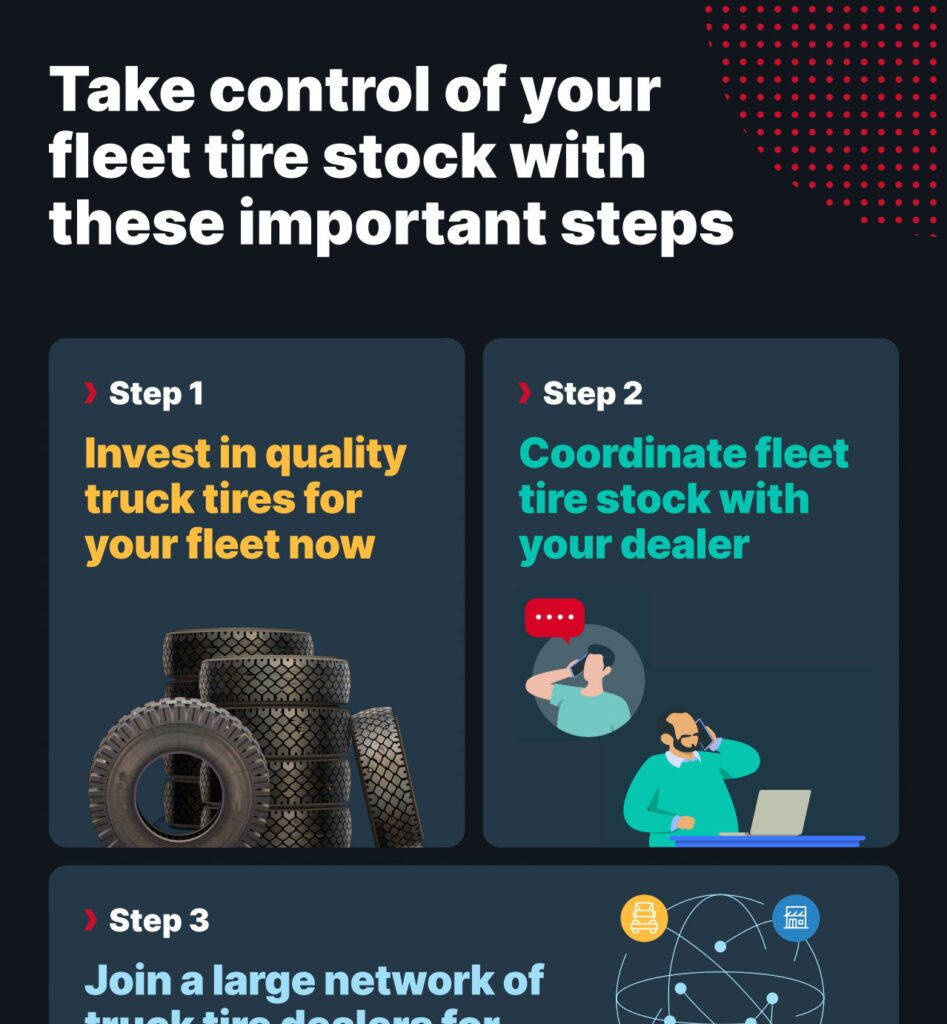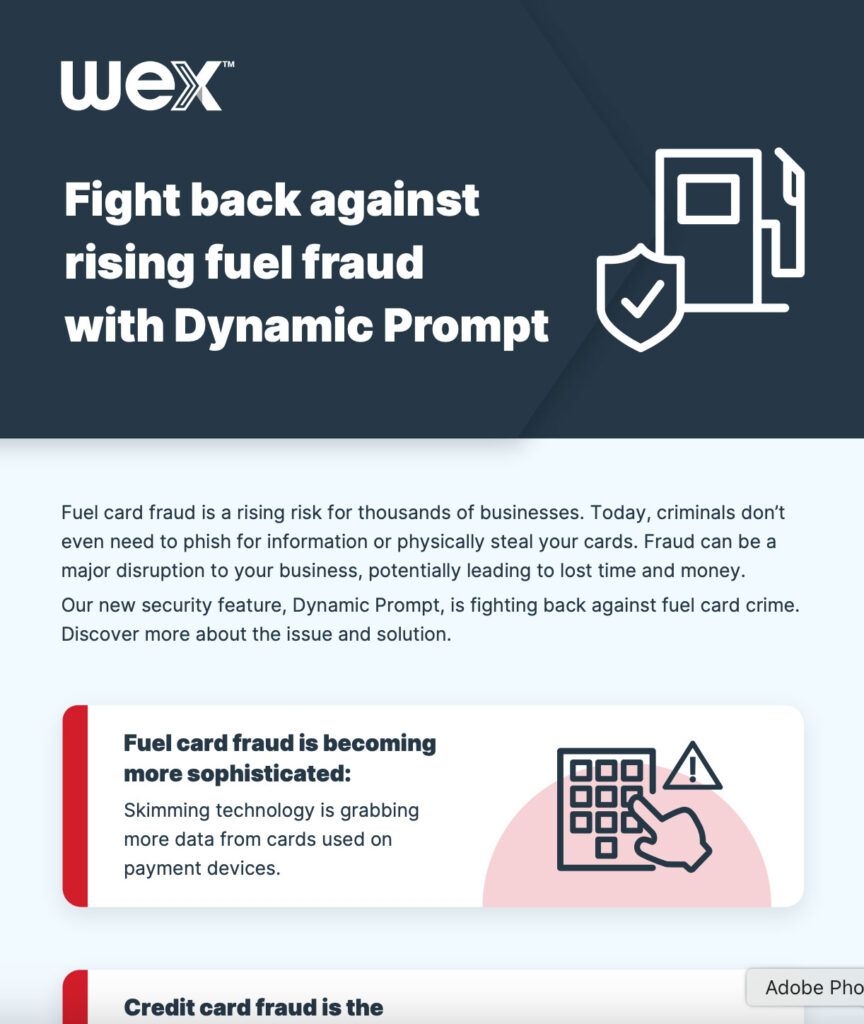Stay connected
Subscribe to our Inside WEX blog and follow us on social media for the insider view on everything WEX, from payments innovation to what it means to be a WEXer.

Operating an over-the-road (OTR) fleet in today’s economic environment requires more than just keeping trucks on the road — it means staying agile in the face of inflation, fluctuating fuel prices, rising labor costs, and supply chain challenges. Fleet business owners and managers are under pressure to control costs while ensuring operational efficiency across long-haul routes, particularly during economic downturns.
The good news? There are creative and practical ways to manage your OTR fleet that can improve your bottom line and keep your trucks moving. Below, we break down the cost categories you need to understand and share five actionable strategies for smarter OTR fleet management.

Download this helpful infographic to learn more!
Before tackling cost-saving strategies, it’s good to understand the expenses involved in OTR fleet management. These fall into two categories:
These costs remain stable regardless of how much your trucks are on the road:
These fluctuate based on mileage, usage, and driver behavior. They can be split into:
Effectively managing variable costs is one of the best ways to optimize OTR fleet operations.
The transportation sector continues to grapple with a shortage of qualified drivers and technicians. As of December 2024, unemployment in this sector was 4.3%, one of the highest across industries. The impact on OTR fleet operations includes:
While supply chains have improved since we were in the depths of the pandemic, labor costs continue to rise, offsetting any relief from cheaper parts. With the current economic uncertainty we face globally, supply chains may once again experience disruption in the near term as well. Fleet managers are already facing delays in sourcing critical vehicle components, driving up downtime and costs.
Nearly half of fleet operations leaders surveyed by Automotive Fleet in 2025 stated that achieving driver compliance to help prevent fraud was the most onerous issue for them. From fuel card abuse to route deviations, these hidden costs can take a big toll. AI-powered fleet cards and telematics are helpful tools for identifying and preventing fraudulent activity.
Leasing vehicles instead of purchasing them outright can help reduce upfront investment and keep your fleet updated with newer, more efficient vehicles. Leasing benefits include:
With the average commercial vehicle age rising to 12.6 years by December of 2024, keeping your vehicles road-ready through preventive maintenance is more important than ever. Use telematics and fleet software to:
Fuel cards designed for OTR fleet management offer more than just convenience — they provide control, visibility, and cost savings. A comprehensive OTR fuel card like WEX offers can help you:
Employee engagement is key to successful operational improvements. Encourage input from drivers and technicians when introducing new tools or policies. Share your vision and why it will help your business differentiate itself and you will:
Staying competitive in the OTR space means adapting to change and investing in future-forward strategies:
WEX is a trusted partner for tens of thousands of fleet managers looking to streamline operations and reduce costs. Its fuel card and fraud prevention solutions give businesses the tools to:

Download this infographic to learn more about Dynamic Prompt and protect your fleet from fraudsters.
WEX has designed a security feature – Dynamic Prompt – that minimizes the threat of fraudulent activity with two-factor authentication, creating an additional barrier to prevent skimmers from being successful. This security feature helps you avoid disruption to your business and keeps your drivers moving.
Log into eManager to learn more about Dynamic Prompt two-factor authentication from WEX.
Did you know you can add SecureFuel technology to many WEX-issued trucking fleet cards? This technology provides greater fleet card control, gives fleet managers sophisticated data reporting and telematics features, catches fraudulent behavior, and helps prevent misuse.
SecureFuel technology – which doesn’t require any hardware – integrates with a truck’s built-in telematics data to monitor fueling transactions in real time, creating more ways to keep an eye on trucks in your fleet. As credit card fraud continues to plague businesses and becomes more sophisticated, this technology can be valuable to your business.
When a driver attempts to purchase fuel with a fleet card, SecureFuel technology checks the truck’s location and tank level before securely authorizing the purchase. By combining telematics with fleet card transaction data, SecureFuel technology identifies any unauthorized purchases or misuse, and companies can choose to be notified immediately of the incident or even decline the transaction.
By combining truck telematics with fleet card transaction data to pinpoint suspicious transactions in real time – and by providing a report on the vehicle’s proximity and tank level after fuel purchases – SecureFuel can quickly find purchase irregularities and trigger an alert to your fleet manager. SecureFuel is one of the industry’s only solutions that uses the truck’s engine control module (ECM) with no additional hardware needed. Plus, as a broadly accepted solution, SecureFuel technology works at more than 16,000 truck stops across the United States.
Not all fleet cards are created equal. Compare WEX’s suite of OTR fleet solutions to find the right fit for your business.
Learn more on how to better manage your over-the-road fleet:
All fleet cards are not the same, and different types of fuel cards suit the needs of different kinds and sizes of businesses. View WEX’s fleet card comparison chart to see which fleet fuel card is right for you.
Editorial note: This article was originally published on November 2, 2022, and updated in 2025 for accuracy and relevance.
Resources:
American Trucking Association
Bureau of Labor Statistics
Go Motive
Trucker Parts and Service
SP Global
DC Velocity
Automotive Fleet
Statista
Subscribe to our Inside WEX blog and follow us on social media for the insider view on everything WEX, from payments innovation to what it means to be a WEXer.